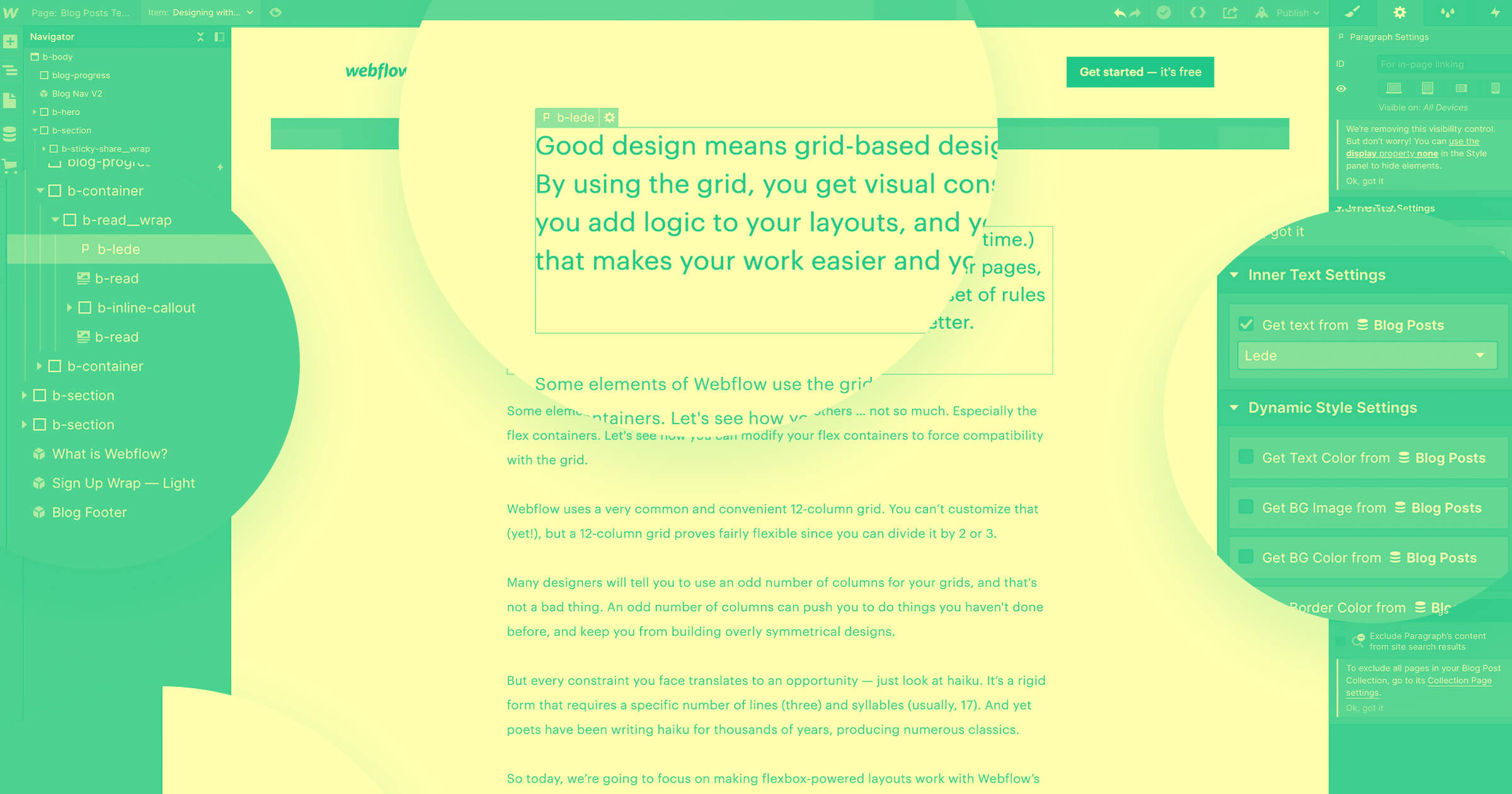Rich content elevates your brand by captivating users with dynamic, engaging digital experiences.
Faced with an overwhelming amount of content vying for attention, online audiences are selective. Simply presenting information isn’t enough anymore — modern users demand more and crave narrative-based, visually appealing journeys that inform and captivate.
Rich content satisfies these needs by combining storytelling with vibrant visuals and interactive elements. This not only drives deeper engagement but also crafts immersive user experiences, laying the foundation for lasting brand loyalty and increased trust. Ultimately, integrating rich content into your site positions your brand as a go-to source in a crowded digital marketplace.
What’s rich content, and why is it important?
Rich content includes multimedia formats and interactive elements that engage users more powerfully than traditional text or static images. You might add videos, animations, and soundtracks to enrich content.
With so many options at their fingertips, users actively choose platforms that entertain and immerse over static pages. In fact, interactive content achieves 50% higher engagement than static content. To meet this demand, your brand must integrate rich content to differentiate itself from competitors, boost engagement, and magnify its message.
The high shareability of rich content doesn’t just widen visibility — it also boosts the chances of viral traction, as your content spreads rapidly and broadly across the internet to draw heightened attention and interaction. This means any team can leverage rich content to improve visibility and engagement.
What are the different rich media formats?
Every brand can benefit from rich content, regardless of industry or niche. Here are seven rich media examples to consider incorporating into your website.
1. Images
Images serve as powerful visual anchors in digital content by effectively communicating ideas, evoking emotions, and enriching storytelling. Whether it’s photographs, illustrations, or graphics, images capture viewer attention and quickly convey information. And when strategically distributed within text content, images also accentuate key points by breaking up dense text and ensuring the content remains visually engaging and navigable.
For example, a travel blog enriched with vivid, high-resolution photos of captivating destinations intrigues readers and fuels their imagination by helping them visualize embarking on a similar adventure and pushing them closer to conversion.
2. Videos
Videos are one of the most engaging forms of digital content. They span a broad spectrum and can include interviews and demos or educational snippets. Videos weave compelling narratives that resonate deeply with viewers by combining music, sound effects, captivating visuals, storytelling, and editing techniques. Their dynamic nature boosts viewer engagement and enhances shareability, amplifying online visibility through increased clicks, reach, and impressions.
A how-to cooking video, for example, doesn’t just list ingredients and steps — it brings the entire culinary process to life. Visually guiding viewers through each phase entices them to recreate the dish and share the recipe with their family and friends. This further extends the media’s influence by driving organic traffic and engagement.
To craft such engaging videos, start with a resonant story and concept and invest in high-quality equipment, such as lights, cameras, and microphones, for professional-looking results. Plan the video’s sequence and script before shooting, and ensure you don’t deviate from the central theme and topics. Use editing software in postproduction to enhance the video with images, sound effects, and music.
After you create it, maximize the video’s exposure by sharing the final product on your website and social media.
3. Animations
Animations transform static images into lively sequences and offer a captivating visual narrative that can make even complex content more digestible. Unlike static graphics, animations string together multiple images or illustrations rapidly to capture and hold attention. They’re great for highlighting website products, enriching video content, or visually breaking down intricate ideas.
For example, organizations selling complicated products, online learning services, or difficult-to-use software can use animations instead of text-heavy documentation or lengthy presentations to make their complex subject matter more engaging and understandable for their audiences.
4. Interactive quizzes
Interactive quizzes evaluate knowledge, preferences, and individualized feedback through user participation. By drawing users into an active dialogue, quizzes enhance the user experience by making it more memorable and impactful. Offering a quiz to users signals that a brand values their input, which helps to foster trust and build a foundation for future interactions.
Imagine a sports apparel company that introduces a quiz titled “Discover Your Ideal Running Shoe.” Such a strategy entertains visitors and delivers a customized experience by guiding them toward a purchase that best suits their needs. It might also compel visitors to share this quiz with others, drawing more traffic to the site.
To effectively manage and edit such content, using a rich content editor (RCE) is essential. An RCE streamlines the creation and editing processes by enabling you to customize rich text and incorporate multimedia and interactive elements into your website. This flexibility in managing rich text content significantly enhances presentation and boosts user engagement, making quizzes entertaining but also impactful and encouraging visitors to share their experiences, in turn driving more traffic to your site.
5. Webinars
Webinars deliver pre-recorded and live content, like presentations, training, seminars, and workshops, to audiences worldwide. Beyond their informational value, webinars also provide opportunities for real-time interaction and enable participants to engage directly with industry leaders and experts.
By hosting webinars, brands can position themselves as an industry leader and foster community engagement through interactive Q&A segments and supplementary downloadable resources.
Consider a software company revealing a groundbreaking new feature. Hosting a live webinar allows them to demonstrate this feature in action, answer questions, address concerns, and build anticipation among their user base.
6. Podcasts
Podcasts offer engaging audio content that explores diverse topics through conversations, interviews, and candid narratives. While they’re audio-centric, many podcasters now provide video accompaniments to their recordings.
Podcasts’ adaptability to listeners’ lifestyles sets them apart from other rich content formats. Whether you’re commuting, working out, or relaxing at home, you can integrate podcast listening into your routine. This flexibility allows audiences to stay updated and informed without dedicating specific time to listening.
For instance, someone interested in the latest tech advancements can absorb insights from industry experts while going about their daily activities.
7. Sound and music
Sound effects and background music are pivotal audio tools that complement the mood and depth of content by creating a richer, more immersive experience. When harnessed strategically, these elements elevate the ambiance of your website and rich content and fortify their auditory identity. By curating or creating signature soundtracks or effects, you can leave lasting auditory imprints that prompt users to recognize and connect with your brand instantly.
For example, an ecommerce platform selling relaxation and wellness products might use a soothing, tranquil soundtrack of waves crashing on a beach to resonate with visitors. This helps potential customers envision the relaxation these products promise, even before purchasing, which deepens their purchase intent.



















Don't let traditional CMS solutions hold you back
Your website is only as good as your CMS. In our whitepaper, learn why a visual-first CMS can help you business scale and build powerful web experiences.
How rich media boosts engagement
Adding rich media to your site goes beyond aesthetics — it deeply influences user interaction and engagement. Here are a few ways it elevates the user experience.
Eye-catching visuals
Rich media grabs attention with standout graphics and visuals that keep visitors glued to the screen. To maximize this impact, prioritize high-quality visuals and thoughtfully integrate them into your site’s design while ensuring they resonate with your target audience.
Tailoring visuals to reflect your brand’s identity — like using consistent colors or thematic imagery — helps forge a stronger connection with viewers.
Vibrant product photos that pop off the page or demonstration videos that vividly showcase a product’s benefits can compel visitors to delve deeper into the site and even lead them down the marketing funnel.
Hands-on interactions
Interactive elements transform visitors from observers to active participants. When you nestle features like polls, quizzes, and surveys on landing pages and blog articles, you foster deeper engagement and gather valuable audience feedback.
Consider an ecommerce platform aiming to launch a new product line. By integrating a short quiz on their homepage asking visitors about their preferences related to this product — color choices, design aspects, or usability features — the company gains direct insights from potential customers. These insights can then inform future product developments or marketing strategies.
You can also include interactive animations to improve your website’s visual appeal and functionality. Think of a product image that zooms in to show detailed features when a user hovers over it or 3D renders that let visitors explore a product from every angle by clicking and dragging. These details enrich the user experience and make visitors more likely to engage with your content and respond to calls to action (CTAs).
Relatable storytelling
Rich content lets you share your company’s story, values, and mission through captivating and emotionally resonant multimedia that allows your target audience to connect with your brand more deeply. Captivating videos, interactive timelines, and engaging animations relay your brand’s messaging and immerse your audience on an explorative journey.
If you want to showcase your startup’s growth and challenges, for example, you can create an animated timeline detailing the significant milestones and obstacles you’ve overcome instead of crafting a simple write-up. This interactive experience gives visitors a sense of your brand’s evolution and makes them more invested in your story.
By engaging your audience with authentic storytelling, you foster loyalty and encourage them to actively participate in your brand’s ongoing narrative.
Enhanced understanding
When you’re presenting complex topics or data-heavy information, rich media like infographics, charts, and visualizations are invaluable. These tools make complicated content more accessible and digestible to your audience by translating it into a visual format. Strategically integrating these visual elements into blogs, reports, or dedicated resource sections not only increases engagement but also amplifies learning.
Text, while informative, won’t always capture the nuances or relationships of complex data. Visualizations offer a clearer presentation and allow audiences to grasp concepts and patterns that might be challenging to convey through words alone.
Consider a health organization trying to convey the benefits of a balanced diet. Instead of slowing readers down with jargon-filled text, they craft colorful charts or animations illustrating the nutritional breakdown of different foods. Simplifying and visualizing this information empowers visitors with knowledge and makes them more likely to revisit the site and further engage with its content.
Elevate your website with rich content
Rich content is a valuable tool to help your brand maintain a cutting-edge presence among your competition. It elevates visuals and interactivity and forges stronger audience connections through storytelling. By harnessing the power of rich media, you foster a sense of community among visitors and keep them entertained.
With Webflow, you can integrate dynamic content into your website. Our visual Designer allows you to add images, videos, and sound into your designs and build websites with interactive elements and responsive design.
Visit Webflow University to access lessons on customizing rich text elements and learn how to use image and video fields to add dynamic multimedia. Take your website to the next level with Webflow.































